How to use chatGPT for UI/UX design: 25 examples
The practical guide to include AI in your daily workflow chatGPT
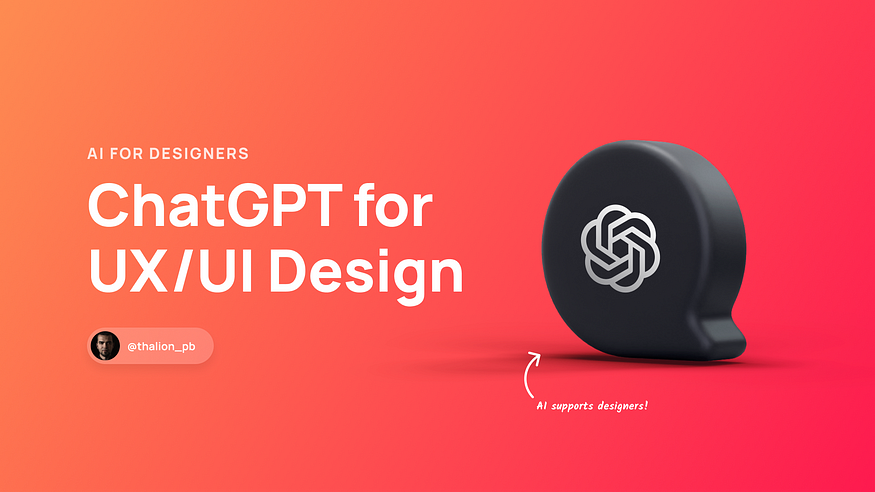
Instead of continuing the endless debate “will AI replace designers” let’s focus on something practical.
The truth is that current AI solutions like chatGPT may become a huge support in everyday tasks. The topics that may be boosted by the tool may surprise you. In this post, you will see plenty of practical examples. I am pretty sure that very soon, you won’t imagine your design process without chatGPT!
Let’s get started!
1. Generate copy for a website or section
Using “lorem ipsum” is very simple, but the design still feels dummy. The better way to visualize design & present even initial iterations to the client is to include a sample copy.
AI tools may generate quite good examples of text content:

2. Optimize already created copy
If you feel that the text content feels a bit off, you may ask chatGPT to optimize it.
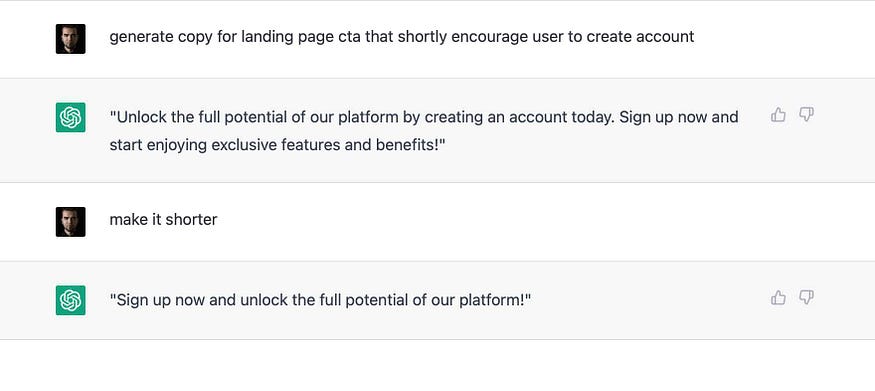
Be aware that the are limits for optimizations, and the text content may start to look very generic.
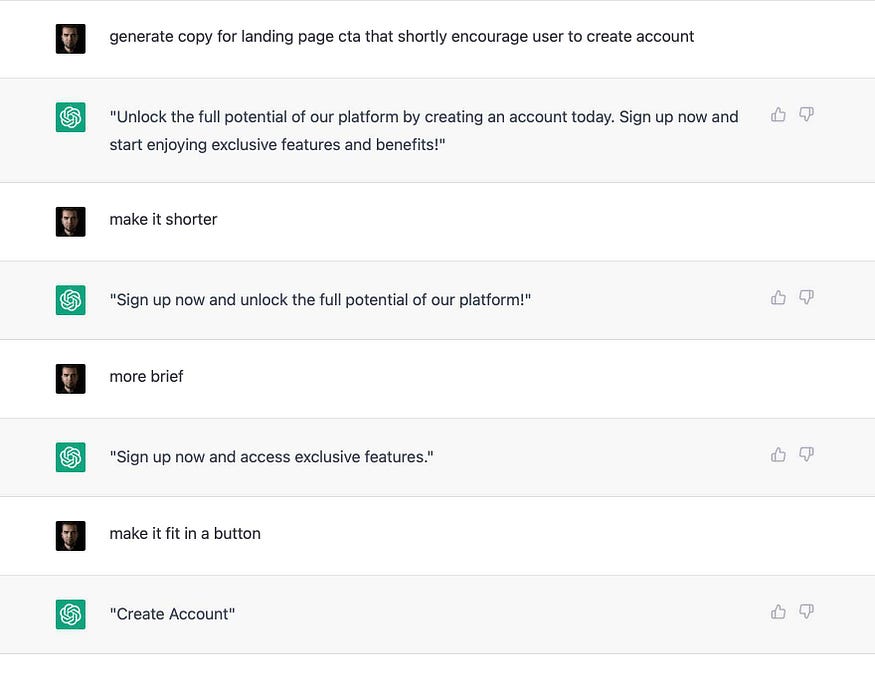
3. Get ideas for page layout or wireframe
Tight deadline? Feeling stuck? To unleash creativity and generate new ideas, use AI to get a description of a wireframe for a specific layout.
Some results seem to work surprisingly well.

4. Find proper usability testing methods for specific apps or website
The right choice of usability testing method can optimize the product dramatically. Feel free to ask chatGPT to recommend some of the methods.
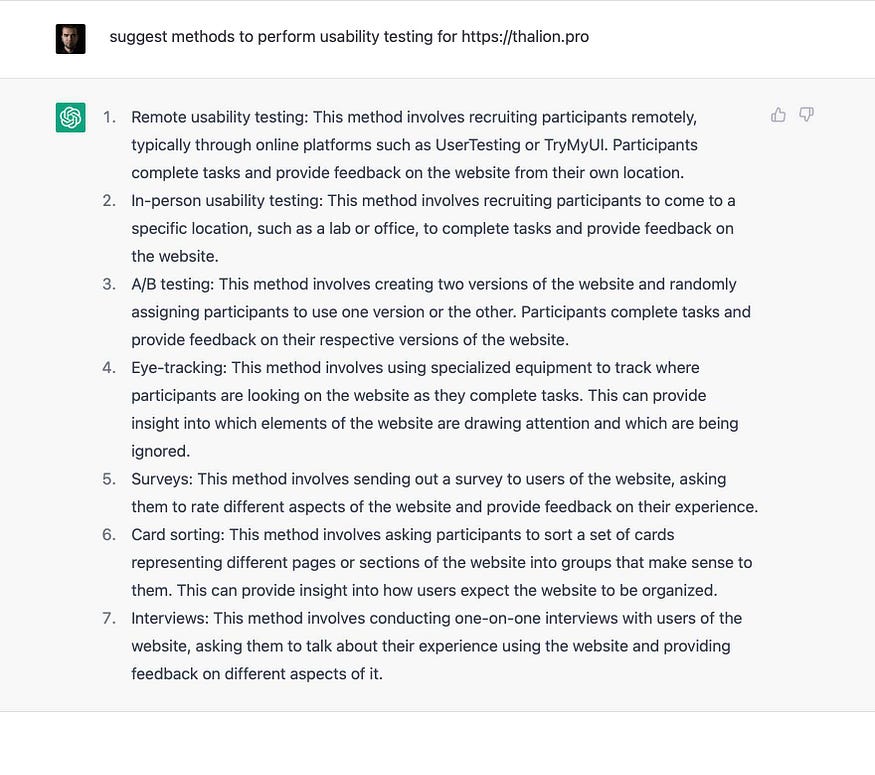
5. Ideas to optimize your design workflow
If you are like me, you like to learn new things and improve your skills. AI tools may suggest you explore new ways of workflow elements like a handoff.
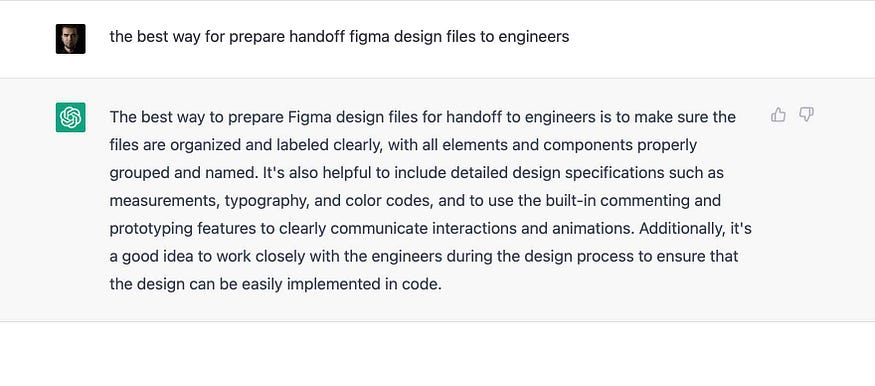
6. Find the best tools to learn
The design industry is changing very rapidly. New tech possibilities are opportunities for a wide variety of tools to have their time.
Ask which tools are used for specific design purposes (like AR or VR), and chat will suggest a couple of solutions.
7. Find the best design resources to use
Finding high-quality resources like design system kits or UI kits is very easy for chatGPT.
Fun fact, when I asked for a smart design system for Figma, AI listed a few good examples, including the resources that I created for designers — Prime Design System
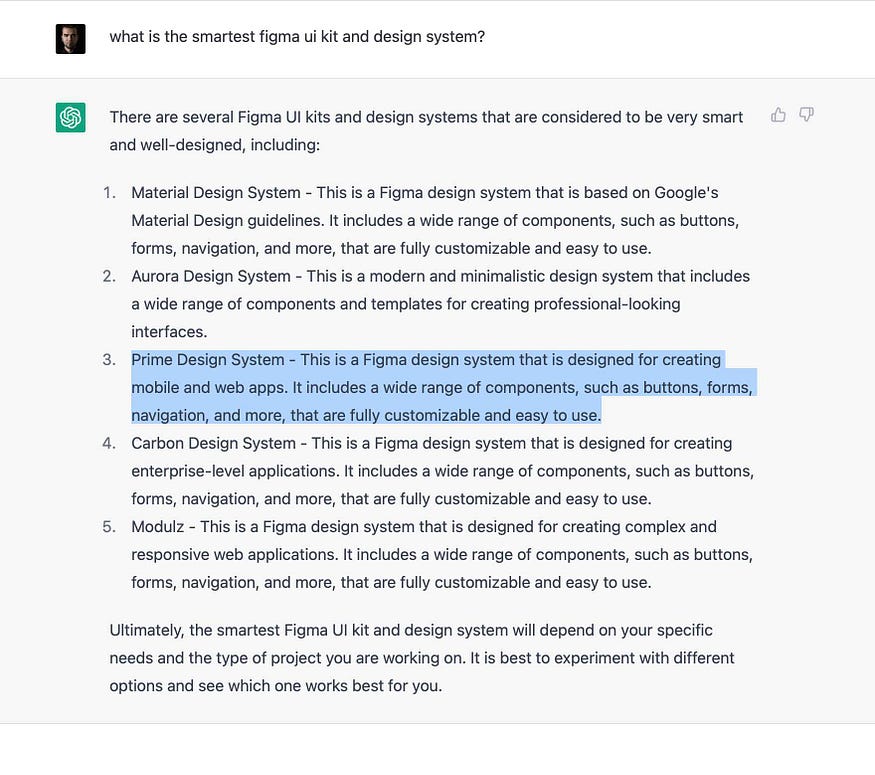
8. Find places to master design
Learning design is almost a routine for product designers. AI is very helpful in finding new sources of platforms to master specific areas:
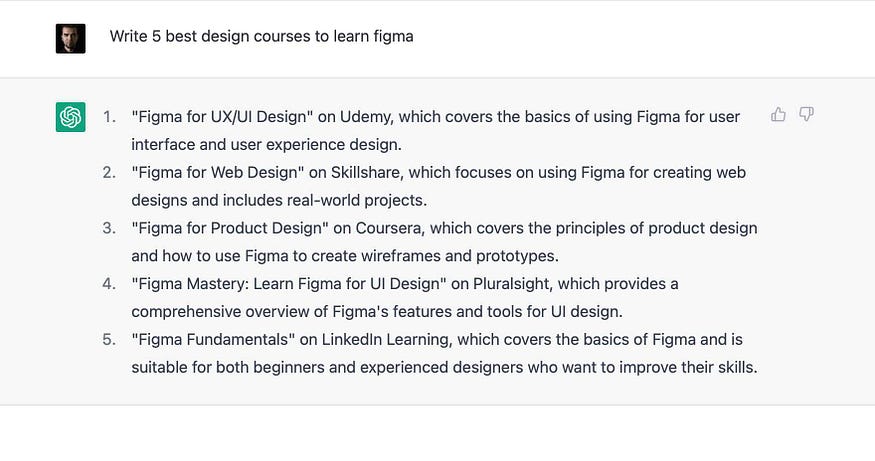
9. Figure out a way to explain complex design terms to team members.
We tend to be very biased by the terms we use every day. Empathy map, user journey, SUS, CTA, and a lot more are terms that might be easily explained by AI.
Thanks to this, your teammates will be aligned with the specific design jargon.

10. Explain design terms to non-tech people.
Sometimes you have to explain the above terms to a client. While team members are usually technical people knowing some similar jargon, there is the case when you have to make it even simpler.
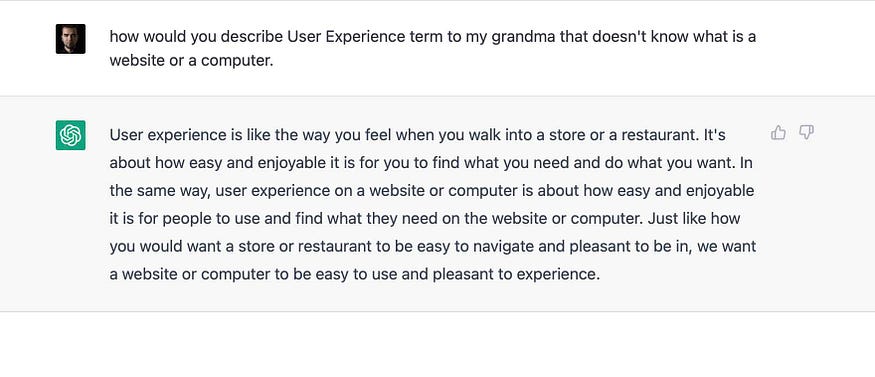
And you may even go in an extremely simple mode:
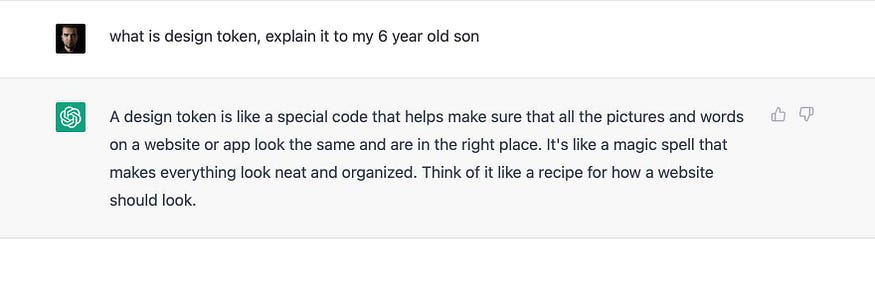
11. Search for design trends
Some designers, including me, spend time analyzing design trends for the upcoming year.
However, only a few seconds of typing and you will get an alternative version of what may be hot in the upcoming months. Nice source of inspiration
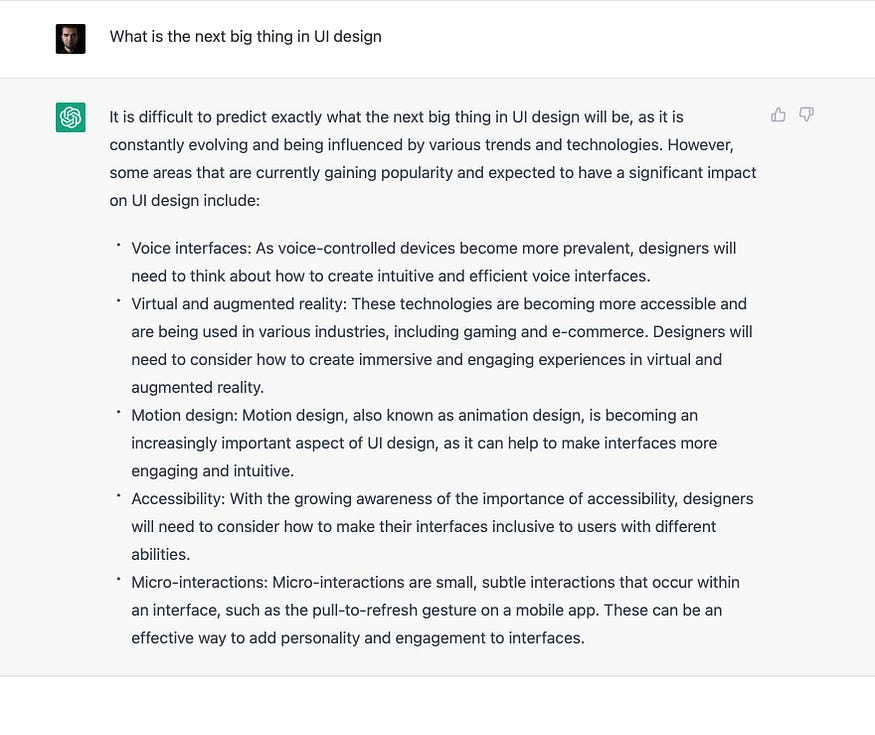
12. Get ideas for design presentation
Feeling stuck with preparing your presentation to a client or team? chatpGPT will recommend you a few points and help you optimize the content.
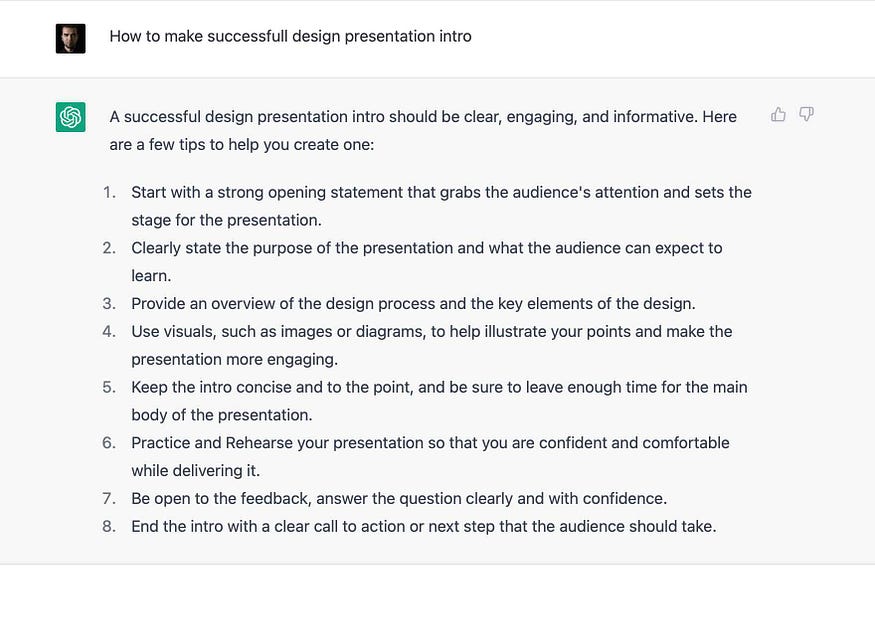
13. Find tips to lead workshops
Suppose you feel that leading workshops or design crits could have been prepared better. AI will have a few suggestions for you.
The more specific issues you will list, the more precise optimization tips you will get.
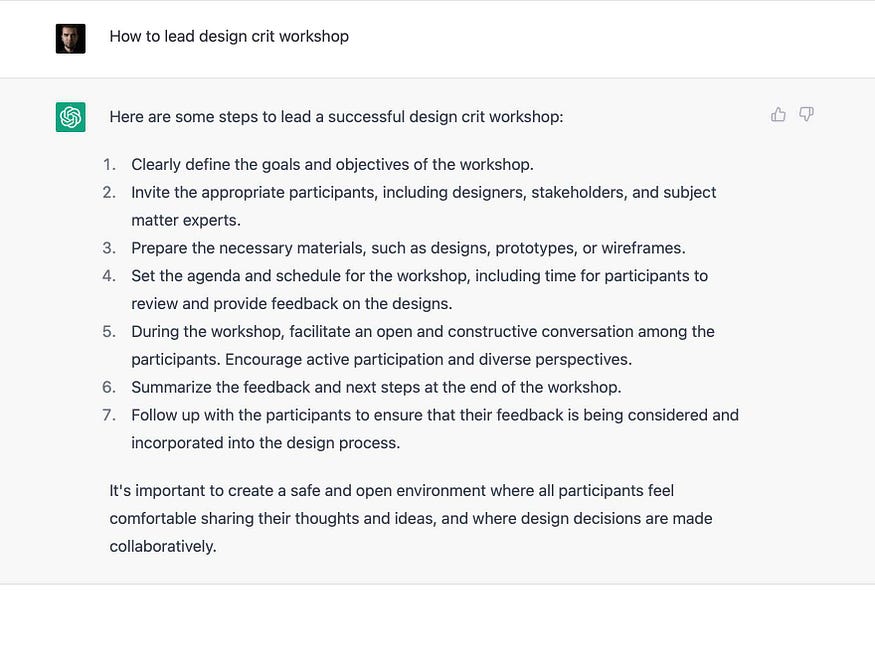
14. Generate sample user flow
If you need some inspiration or just need to verify if you predicted all steps in the user journey or the flow. Ask AI to prepare the list of steps. The results are very good.
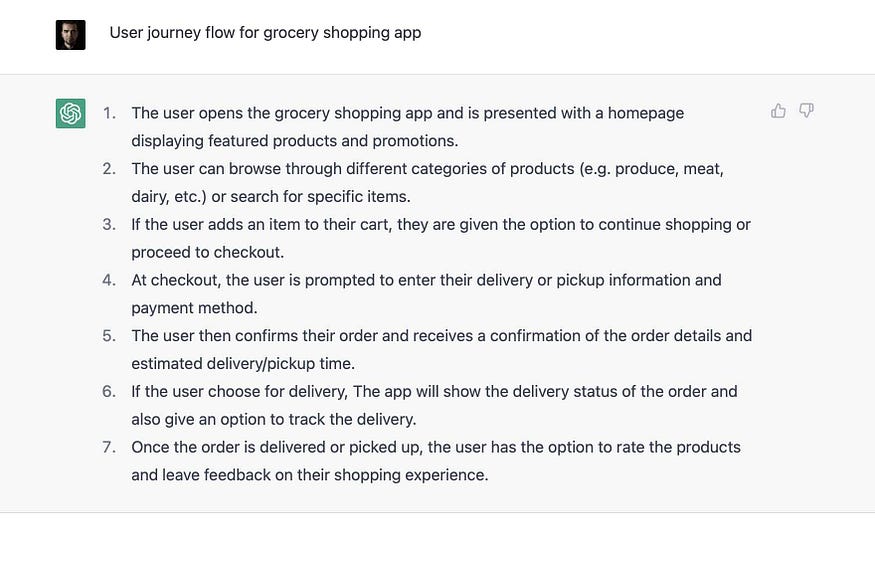
15. Get ideas to optimize the experience
Once you get your user flow, there is always an area for optimization.
chatGPT may provide you not only areas to enhance the specific journey but also smart suggestions that may blow your mind.
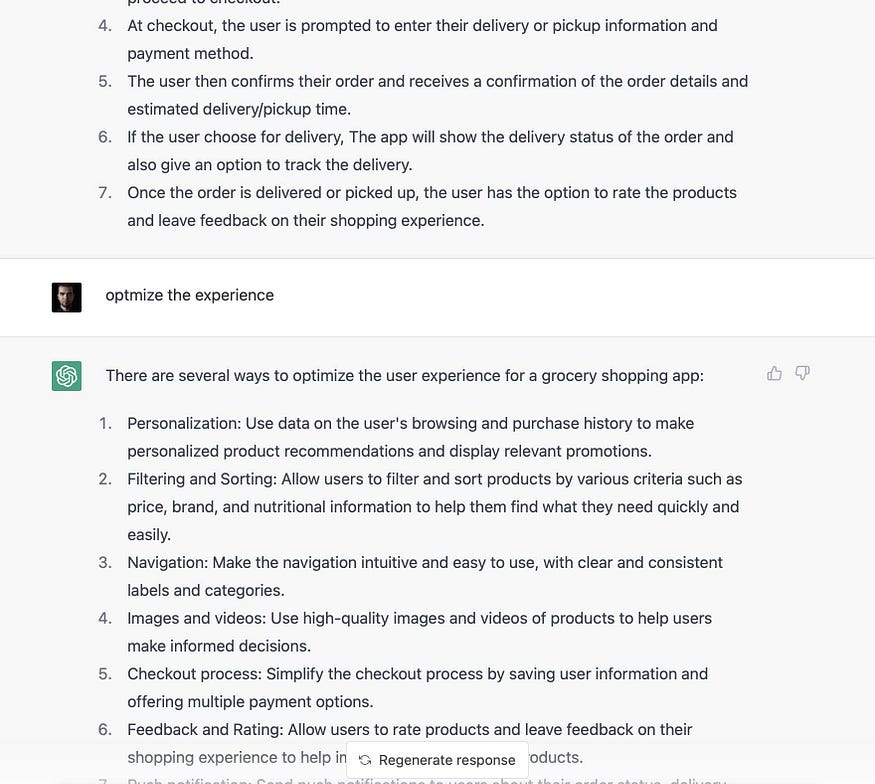
16. Get a copy for error messages
I don’t know anyone who likes writing error messages. That’s why you may let AI do that for you.
Write down that you need a failure message for a specific scenario, and that’s it.

17. Optimize copy for the specific tone of voice
If you feel that generated message is very generic or does not fit the copy guidelines of your solution, suggest chatGPT to change the tone of voice.
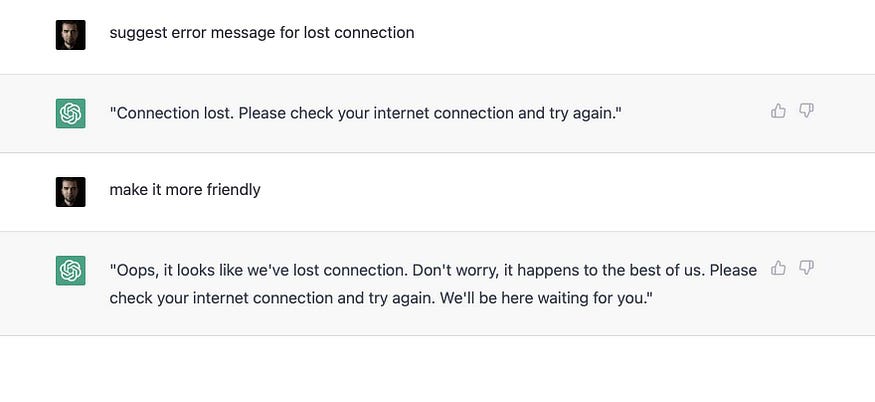
18. Write a product brief
Writing a product description may get much easier with powerful AI suggestions.
If you need some specific elements to be included, write down all requirements and observe how the magic happens:
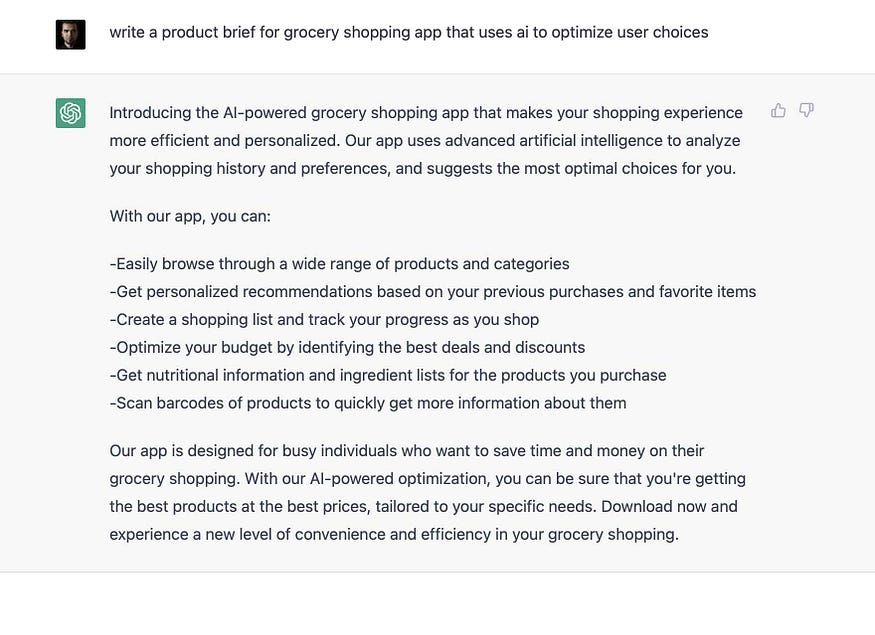
20. Get ideas for Dribbble shots
If you don’t have an idea for a concept, or you are looking for something different than previously posted, AI is here to support you.
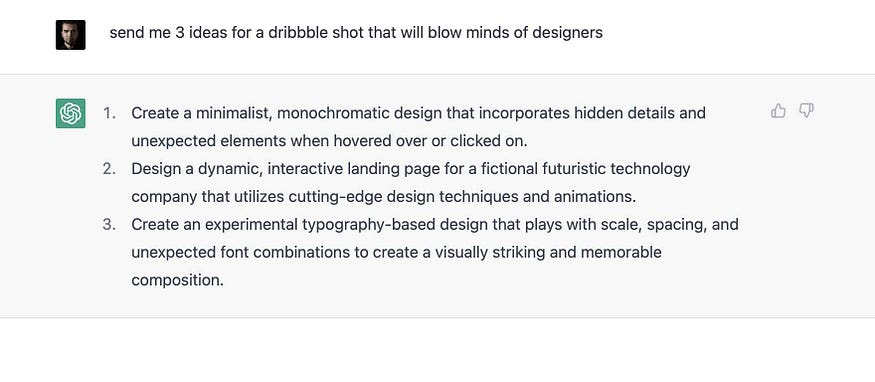
21. Translate text content
For multi-language applications, it’s nice to test how the copy will look in another country. This is important because some commands may not be brief enough to fit in a button etc.
ChatGPT may easily prepare a translation of specific UI elements.

22. Write design system documentation
The idea for this example was inspired by the article written by Chris Lüders. The result is so impressive that I didn’t expect to get something like this from AI.
Providing specific requirements and tables and describing them precisely will result in a quite good quality example of documentation!
You may even get code samples.
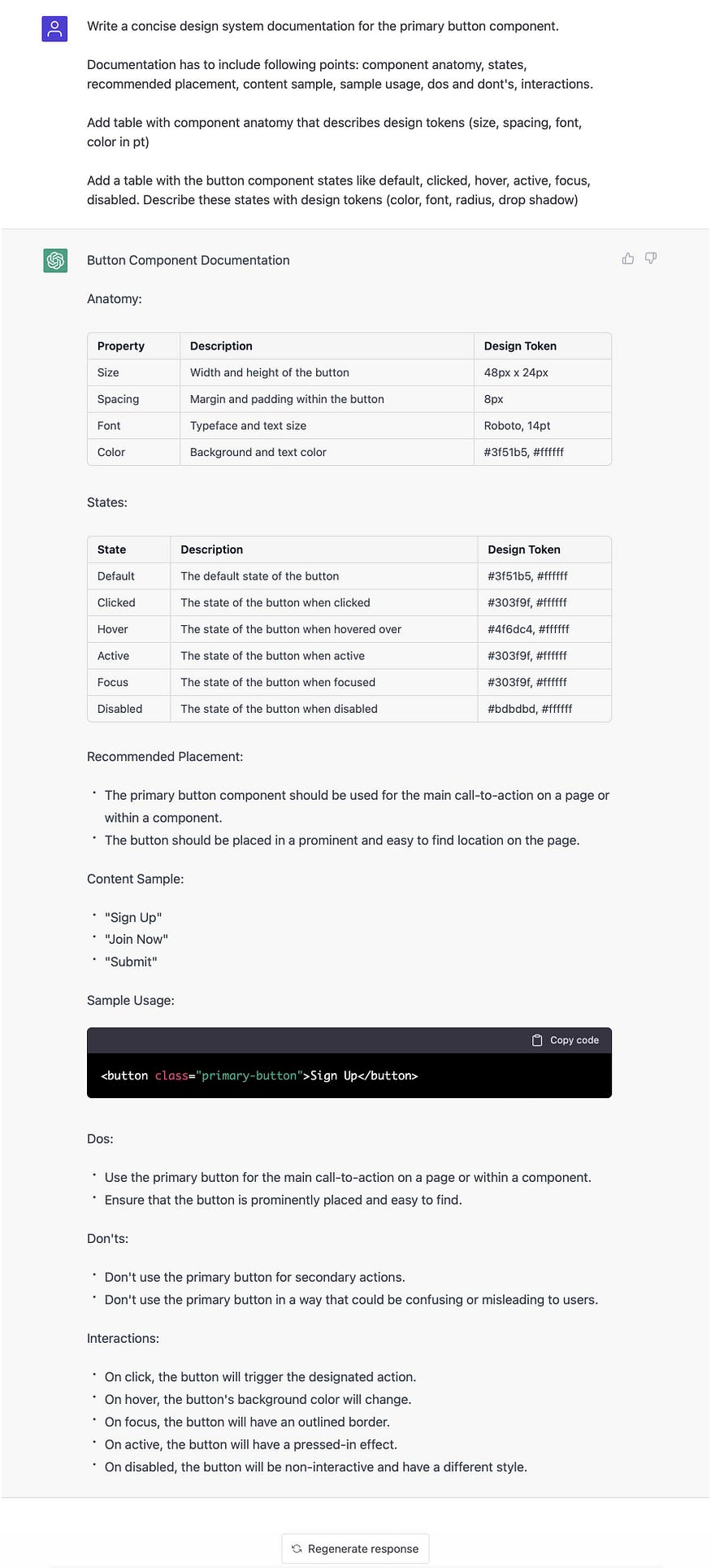
23. Search for freelance works
If you are looking for a job and current sources do not work well, chatGPT will be helpful for finding new job offers.
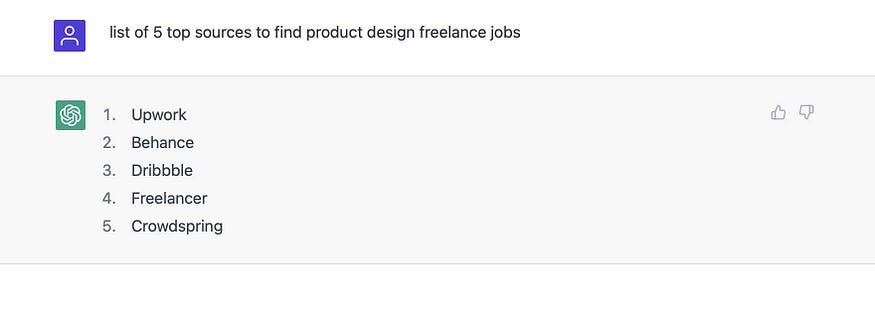
24. Get tips to win the freelance job
Once you get your freelance offer, time to get some tips to win it. Inspire yourself with recommendations provided by AI
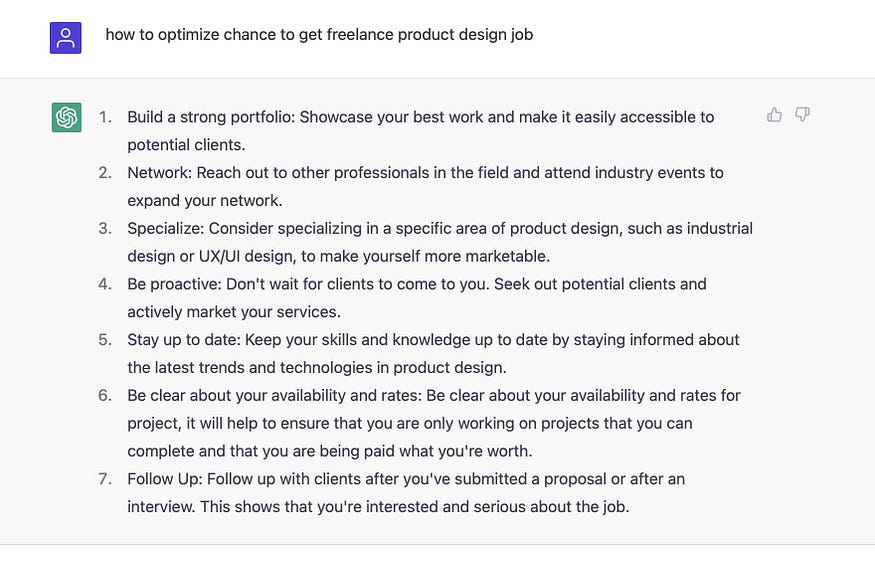
25. Get real data for design research.
Getting some data for design research might have been very time-consuming, even with Google. Now, chatGPT may search lots of sources for you and generate results in a few seconds.
Results are useful, and you may always follow up to ask to get more!
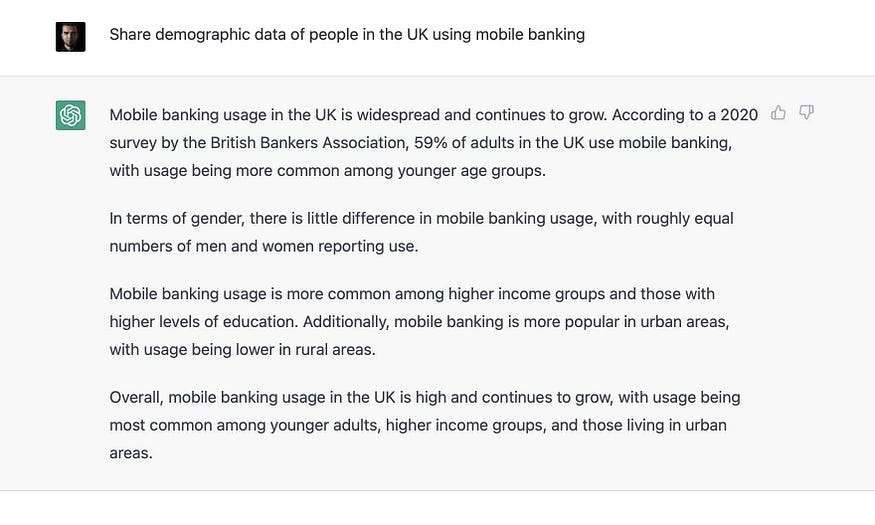
Ask AI how it may help you!
Finally, you may ask chatGPT itself how it may help you. I took some of the inspirations for this article directly from the tool!
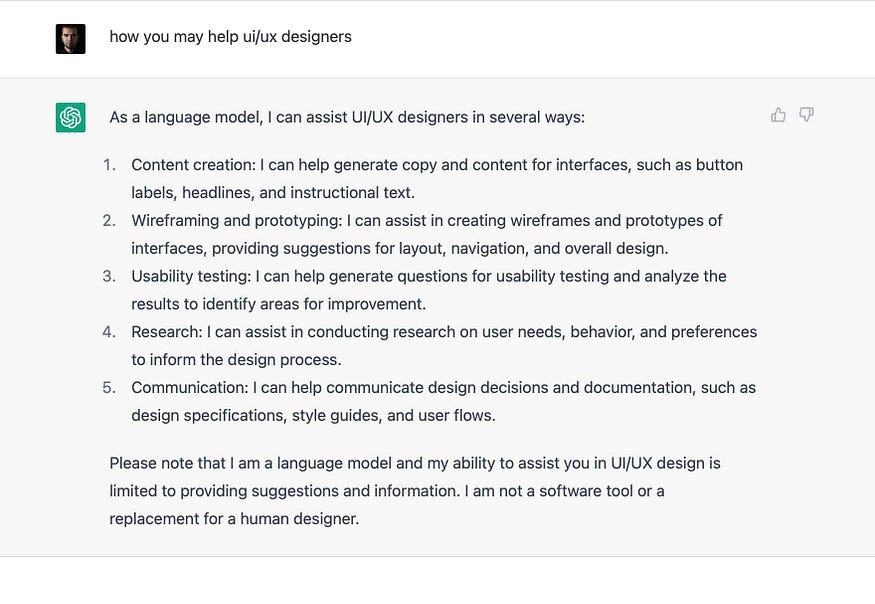
Summing up
You got a bunch of inspirations of how real AI may help you in your daily tasks. Some of the examples may feel generic or basic, but others, like the design system documentation example, is mind blowing!
It is worth constantly checking the responses of chatGPT because, like every AI tool, it is constantly learning to improve the results.
Thanks for reading!
Post a Comment